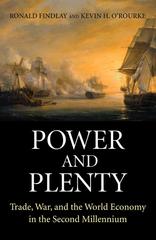Question
I am working on a Policy Brief. I have to write on the limitations. The limitations are formulated from the information below. An energy embargo
I am working on a Policy Brief. I have to write on the limitations. The limitations are formulated from the information below.
An energy embargo imposed by OPEC against the United States a year ago has resulted in a sudden decrease in oil supply, which has led to an unexpected increase in energy prices. The current state of the economy is concerning, as this has caused significant inflationary pressures and could have long-term implications for economic growth.
The sudden increase in energy prices has caused a ripple effect throughout the economy. The higher energy costs have increased the production, transportation, and distribution of goods and services. This, in turn, has led to a rise in prices for consumer goods and services, including essentials such as food and housing. The price increase has also decreased consumer spending, as people have less disposable income. These combined factors have led to a slowdown in economic growth and a potential recession.
Background:
Unemployment and the economy are interconnected concepts. Unemployment refers to the percentage of people willing and able to work but who do not have jobs. Conversely, the economy relates to producing and consuming goods and services in a particular region or country. When unemployment is high, there is a lower demand for goods and services, leading to lower economic growth.
The current output is $1.549 trillion, less than the estimated full employment output of $1.7 trillion, indicating that the economy needs to be operating at its full potential. The current unemployment rate is 8.10%, which is higher than the estimated natural unemployment rate of 5.5%. This indicates that there is a higher level of unemployment than what the economy can naturally sustain.
The current inflation rate should be mentioned in the information collected. However, the target inflation rate is 11%, higher than the average inflation rate of 2% in the United States. This indicates that the government may be trying to stimulate economic growth by increasing the inflation rate.
The current Fed Funds rate is 2%, indicating that the Federal Reserve is trying to maintain a low-interest rate to stimulate economic growth. The current MPC is 2.1%, which means that for every $1 increase in income, people tend to spend $0.21 more.
The current reserve ratio is 0.80, indicating that banks are holding less in reserves than what is required by the Federal Reserve. This can lead to an increase in the money supply, which can, in turn, lead to inflation.
Either Action- Increase AD
Potential Fiscal Policy Solution: Increase Government Spending
An increase in government spending can help to close the $151 million dollar gap in the output. Because the MPC is .8, the spending multiplier is 5. Therefore an increase in government spending of $30.2 million will result in an increase in rGDP of $151 million.
Change in Output Gap =Spending Mult. * Change in Spending
$151 Million = 5* $30.2 Million
This will increase C and G components of GDP
Potential Monetary Policy: Buy Bonds
If the Federal Reserve buys bonds, this will results in a increase in the money supply which will increase short term interest rates. A increase in interest rates will lead to a increase in the I component of GDP, as well as a increase in interest sensitive components of C.
Step by Step Solution
There are 3 Steps involved in it
Step: 1

Get Instant Access to Expert-Tailored Solutions
See step-by-step solutions with expert insights and AI powered tools for academic success
Step: 2

Step: 3

Ace Your Homework with AI
Get the answers you need in no time with our AI-driven, step-by-step assistance
Get Started


